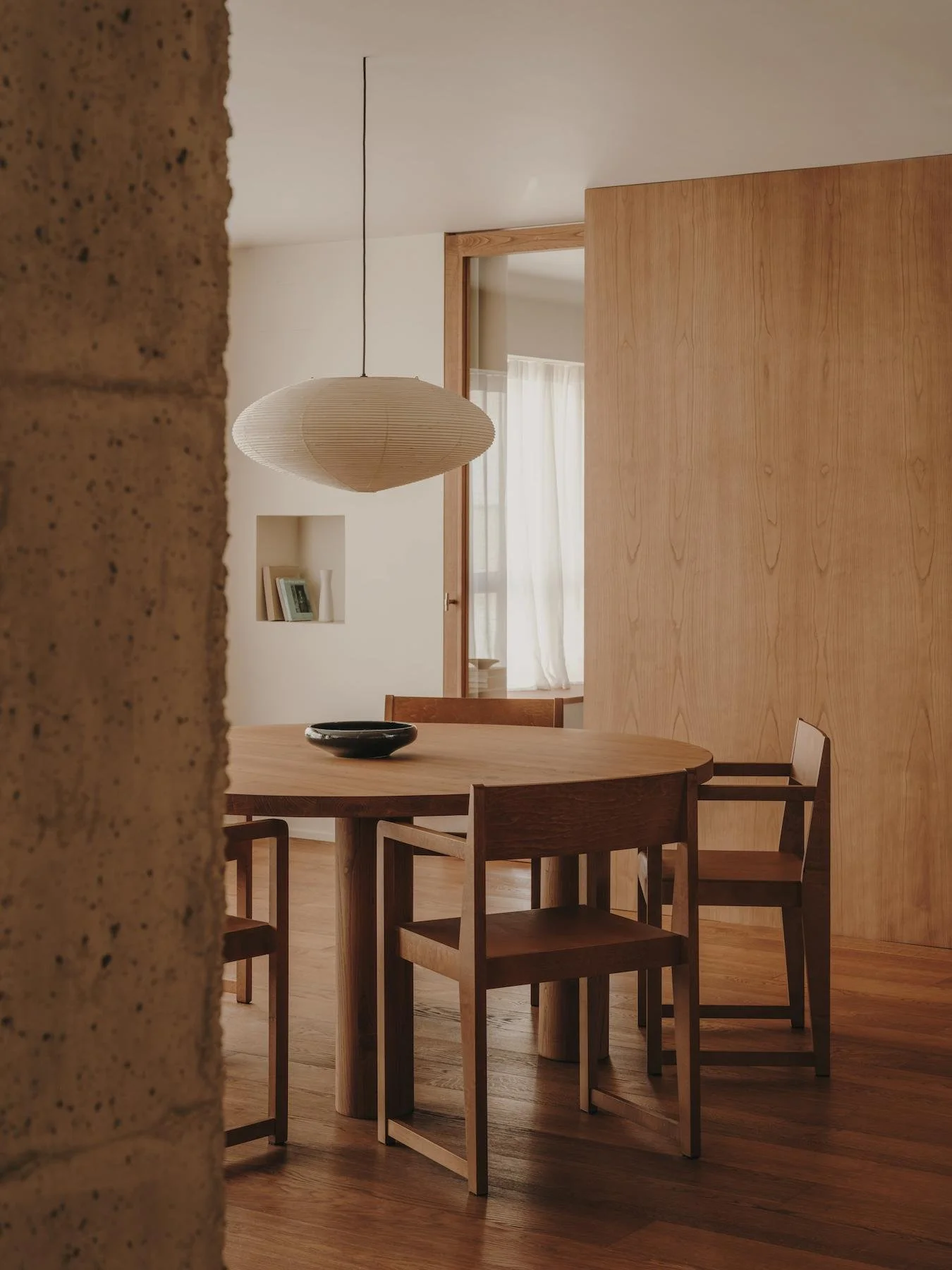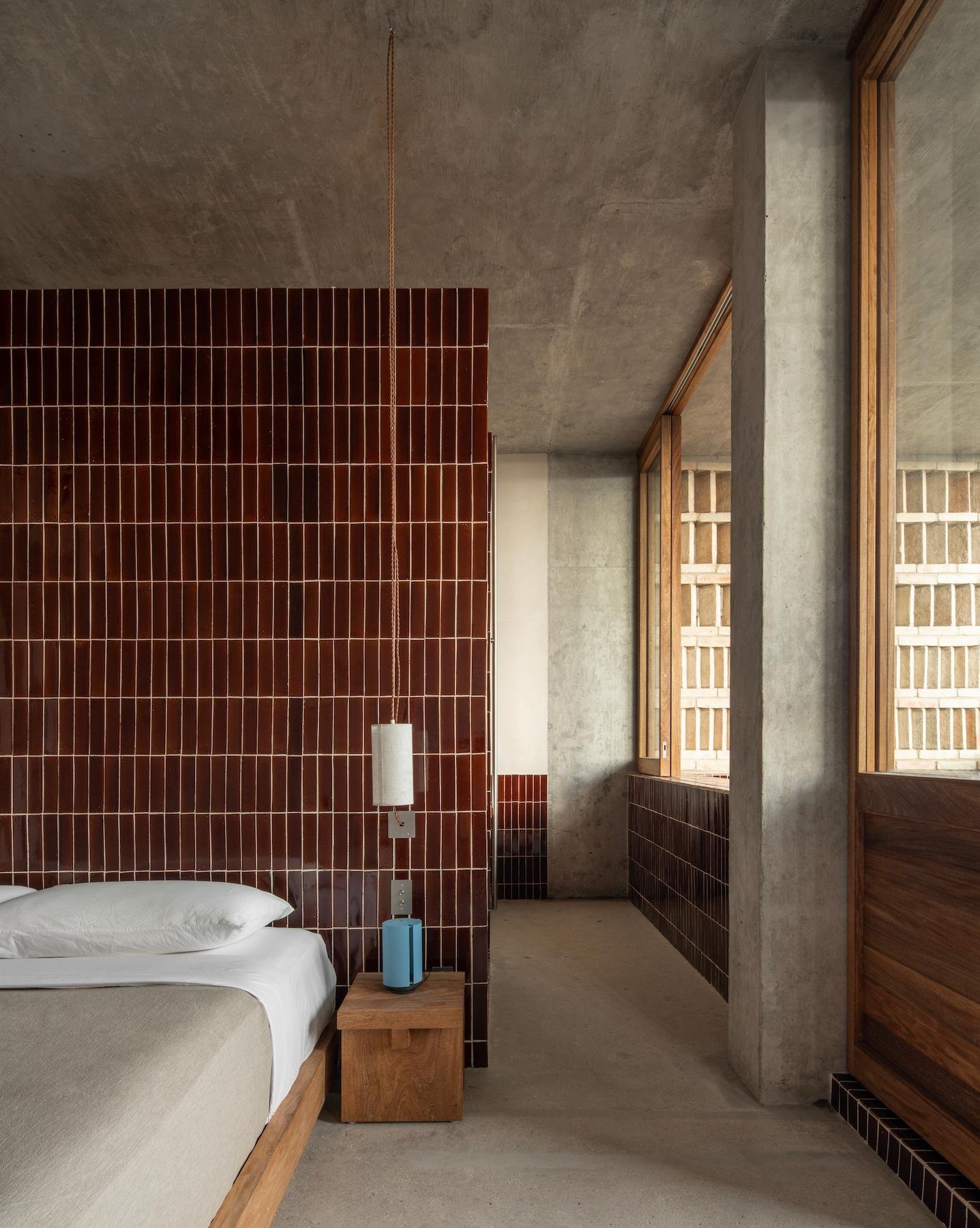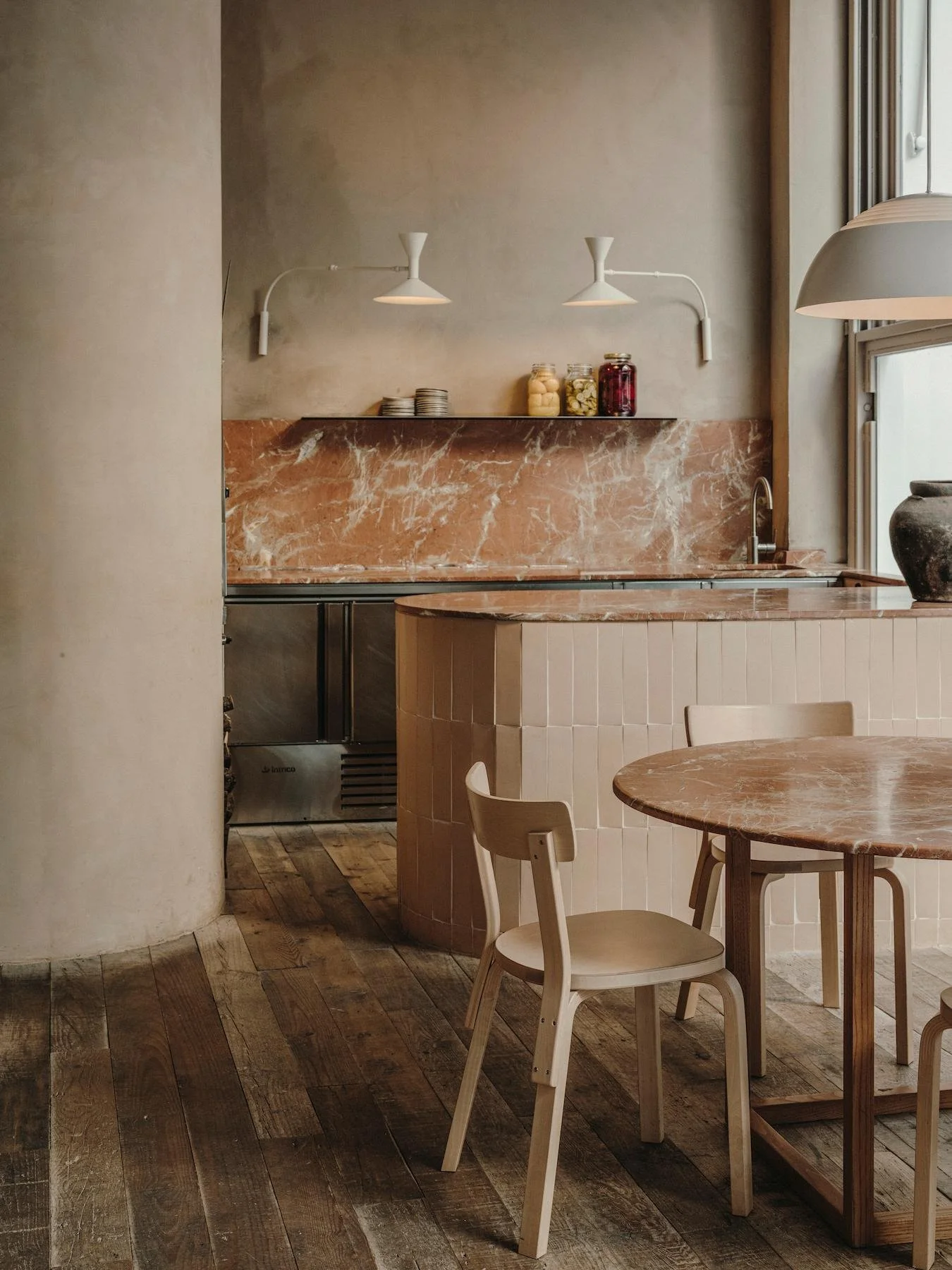Plantea Estudio: Between Tradition and the Present
Plantea Estudio: Between Tradition and the Present
A closer look at the studio’s pursuit of architecture that feels both grounded and unmistakably contemporary.
Studio:
Plantea
Images:
Salva Lopez, Marina Denisova,
Daniel Faro, Fabian Martinez
Plantea Estudio approaches architecture as a craft rooted in humility, attention and the quiet pursuit of doing things well. Guided by tradition yet grounded in the present, their work balances context and contemporary expression while celebrating materials, everyday rituals and the people who shape each project.
From Berlin cafés to Madrid interiors, Plantea creates spaces that feel both deeply human and timeless, turning ordinary moments into something memorable.
In this conversation, the studio reflects on their philosophy, their process and the evolving ideas that continue to guide their work.
VISUAL PLEASURE Magazine: Your studio often describes architecture as a craft that must be approached with humbleness and realism. What does that mean in your daily practice?
Plantea: It means that, regardless of how many projects we’ve completed, the next one is always a new opportunity to learn from the client, the builder, the carpenter... anyone who becomes part of the team. It’s also a chance to carefully explore a new material or construction system. Learning never stops.
At the same time, it’s essential to remain aware that we’re entrusted with people’s dreams, savings,or investments, something they place in our hands. It’s a great responsibility and must be approached with deep respect.
Even so, the humility to work with utmost care and the best attitude, knowing that mistakes are always possible, must be accompanied by the confidence that we have the skills to give the very best results.
Tradition plays an important role in your philosophy. How do you reinterpret traditional forms or techniques without falling into nostalgia?
We try to capture the essence of what interests us, not its form. We reinterpret the deeper meaning of what is traditional or classical — almost never its language. It’s similar to literature, for instance. We may wish to express the same idea that Rilke or Marcus Aurelius once said, but we must do it with today’s words, for today’s circumstances or people.
Architecture is no different. We are drawn to universal ideas, to the places that have made people feel well five hundred years ago and still do today. The human being remains the same; in truth, what we love most has always been the same. But we must build those ideas using the possibilities and materials of our own time, and through a language inevitably connected to the present.
You describe architecture as an artisanal, repetitive exercise, a process where doing what has always been done, but doing it well, leads to innovation. How does that mindset shape your workflow?
A Japanese master of calligraphy or sushi may spend an entire lifetime repeating the same stroke or cut, until reaching a level of skill that transcends the very purpose of the act itself. They could do it slightly worse and almost no one would notice. And perhaps it wouldn’t matter much — someone would still eat it or read it. Some might say that what truly matters is nutrition or information.
Yet these everyday acts, when truly well done, can make us happy if we learn to be aware of them. For the one who performs them, simply for the sake of achieving virtue; and for the one who experiences them, because they receive a small, unexpected wonder in an ordinary moment.
Having a good coffee in a place that awakens your senses; working somewhere that makes you feel at home; eating a carefully made pizza in a space that flatters you and invites good conversation; walking home past a well-lit shop where everything feels desirable; and having dinner with cheeses crafted by artisans, cut with a delicate knife on an olive-wood board... all this can turn an ordinary day into something extraordinary.
There’s no need to wait for holidays or weekends — it can happen every day. And it’s not a matter of money, but of attention to what truly matters.
Your projects often feel grounded in place while remaining unmistakably contemporary. How do you find that balance between local identity and modern expression?
We try to take into account the building itself, the neighborhood, the city... to establish a connection with the built and social environment around us. When there is little dialogue possible with what already exists, then we seek a connection with nature instead.
A café in the center of Berlin, housed in a 1960s building, cannot be the same as one on Madrid’s Barquillo Street, in a classical 1930s space. And yet, both can be conceived with the same attitude, even sharing certain elements that connect them.
The character of good architecture should be understandable at first glance — it should fit naturally (or stand apart, if that is its intention) within its surroundings. But it should also be profound, misterious somehow, containing contradictory qualities that lead us somewhere else, shaping a unique identity: complex, sincere, imperfect. Much like a really interesting person. Will always fit in, blending distinctively.
In your work on Acid Berlin in Mitte and the Acid Café in Prenzlauer Berg, you respected both buildings’ raw elements while introducing warmth and comfort. How did the distinct contexts of these two neighborhoods inform your material choices, layout, and atmosphere?
In Mitte, we were working with a classic neighborhood building, nothing ostentatious, but very much part of the middle-class fabric of central Berlin. We tried to capture the character of a Berliner: austere yet warm, functionalist but deeply human, proud of their roots while still curious about Mediterranean culture. Almost as if this Berliner spent every summer holiday in Cadaqués, and that spirit had quietly stayed with them.
In Prenzlauer Berg, we encountered a more recent building by a thoughtful architect—someone who clearly values detail, precision, and abstraction. It’s a space of concrete, aluminum carpentry, and galvanized steel shutters, waiting for the elements to slowly erode its perfect geometry and turn it into a lived place, one that hosts real encounters and everyday moments. We imagined completing it with pieces and objects in stone, chestnut wood, ceramics, textiles... elements that would make it function, but more importantly, reconnect it to human scale, to craft, and to nature. Preserving its original character, yet revealing its more sensitive side. This other Berliner—modern and culturally sophisticated—has a strong affinity for Japanese culture.
The environments we feel most aligned with are always layered, complex, and even a little contradictory—much like truly interesting people.
As your studio works between Madrid and international contexts, how does the shift from intimate interiors to larger buildings influence your way of thinking and designing?
The attitude required to create a place where people feel truly comfortable is exactly the same at any scale and in any location. It’s about directing our attention toward what really matters. We try to think about the needs and sensations of the people who will inhabit the space, as well as the social and historical context in which the project exists. And we design from there, never from our own personal interests.
It isn’t necessarily more difficult to do this in a large hotel than in a small apartment. What makes us all feel genuinely well has essentially remained the same everywhere, throughout time. Style, language, and character may vary, and we always try to adapt to those nuances and contribute what we believe can complement them. But at its core, it’s always the same.
As a collective practice, how do you ensure that every project still carries a distinct Plantea Estudio identity?
We don’t make sure of that. If anything, we’d love our projects to be even more distinct from one another, more personal and less “designed”. But we’re not there yet; there’s still a lot to learn in order to achieve that.
Some great architects, like Asplund or Sáenz de Oíza, managed to do it. Most of us, when we achieve small successes, instinctively (or in some cases deliberately) try to repeat the formula.
Asplund’s Woodland Chapel at the South Cemetery and the Public Library, both in Stockholm, look nothing alike. Torres Blancas and the Banco de Bilbao building in Madrid (barely a kilometer apart), both by Oíza, also couldn’t be more different. They each respond to entirely different conditions, programs, and needs.
We wish we could differentiate ourselves more. It would mean that the work prevails, not the designer.
Over the years, how has your studio’s approach evolved? Are there ideas you’re rethinking or letting go of?
In the beginning, we had very little confidence in our own abilities, and we tried to interpret solutions we saw in the work of contemporary studios we admired. We couldn’t quite find a way to apply the more essential ideas we were studying in the great architects of the 20th century, or in traditional, vernacular architecture created without architects.
As we gained more confidence and more tools, we learned to embrace these deeper architectural principles and bring them into practice. The arrival of Carla Morán to the team helped enormously, as did the invaluable contributions of the exceptional builders, carpenters, and stonemasons we’ve had the chance to work with.
Looking ahead, what are you most interested in exploring as a studio, both in terms of ideas and the kinds of projects you hope to take on?
We like to see what we do as a service to society, much like the work of a doctor. Or perhaps like that of classical painters or musicians (Velázquez or Mozart) who worked almost entirely on commission and with a sense of purpose. Like doctors, we can’t choose our “patients.” We work for whoever calls us, and we enjoy continuing to take on small projects.
We don’t have any consultant helping us “run” the studio, because we don’t want to become a company. We would end up in the hands of efficiency and money, both enemies of architecture (and of medicine and the arts).
Unfortunately, we can’t take on everything that comes our way, and we need to maintain our level of commitment to each project we begin. So we decide based on the moment in which a commission arrives, and on the intuition of where a stronger understanding and the possibility of a more interesting result might emerge.
Having said that, if we could choose, we would love to design small residential ensembles: a limited number of homes with a strong emphasis on shared spaces and the relationship with nature. Something in the spirit of the Italian palazzine, the residential buildings of Sant Gervasi in Barcelona, or those in the Roma and Condesa neighborhoods of Mexico City.
















